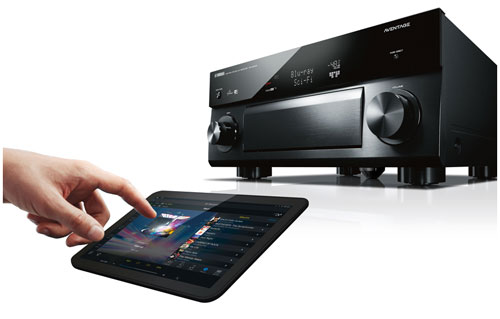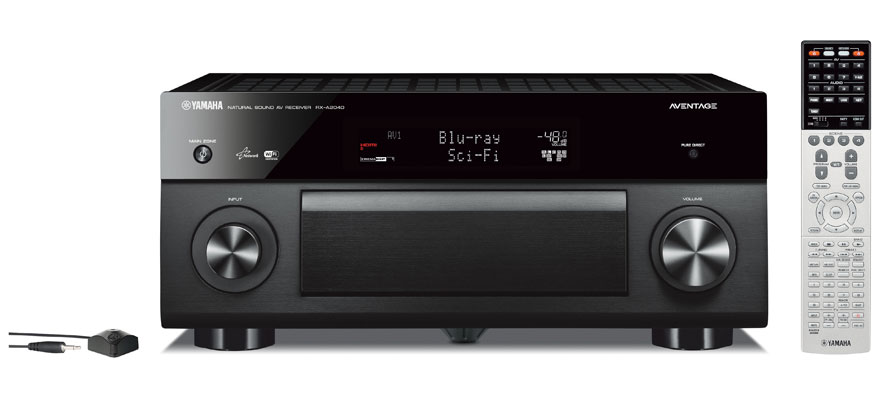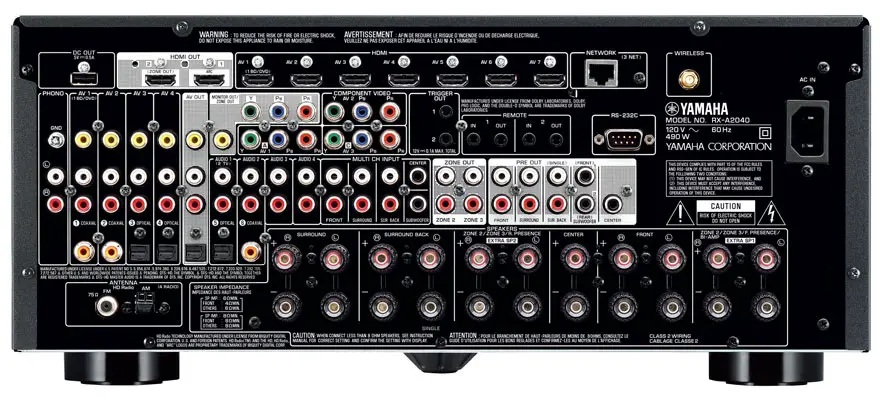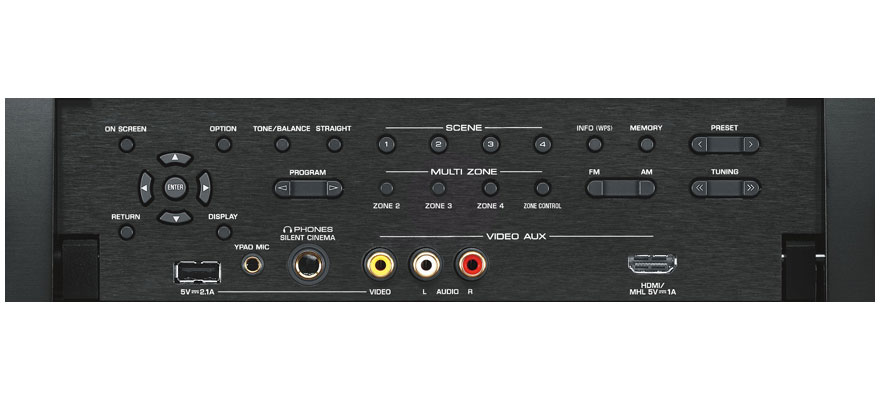Setting up a home theater system is more affordable than ever these days. You can save some money by taking your time in getting the right receiver and buying a set of speakers separately. In fact, there are plenty of great home theater receivers priced under $1,000 these days including the new Yamaha receivers in the AVENTAGE lineup. Because these receivers are so rich with features and boast fantastic audio quality, the purpose of buying more expensive receivers like the Yamaha RX-A2040 becomes a lot clearer. The RX-A2040 is a 9.2-channel AV receiver which basically translates to a ton of setup possibilities. It is also for people that need to be on the bleeding edge of home theater entertainment. Now all that’s left is to see how this receiver fares when pitted against its predecessors and the rest of the competition.
Design
The Yamaha RX-A2040 sticks to the common trend of manufacturers, keeping their high-end receivers clean on the outside, sophisticated on the inside and extremely busy on the rear. The top part of the receiver’s front is pretty simple with a power button on the left and a “Pure Direct” button on the right. The info display takes up the center while the brushed aluminum panel lies just below it with the input and volume knobs flanking the panel. It looks just like the older Yamaha RX-A2030 model but the RX-A2030 had one key thing missing – a Wi-Fi logo because none of the models in the 2014 AVENTAGE lineup had it. Fortunately, the RX-A2040 has it.
You can open this panel if you need the convenience of plugging in mobile devices or other temporary home theater components. Unlike the previous model, devices that need an optical input connection have to be plugged on the back as Yamaha took it out the one on the front. HDMI is more popular anyway and it remains as a front input with MHL and the 2.0 specification which opens up full 4K support. You will also find a standard headphones jack infused with the Silent Cinema technology, a mic jack for YPAO calibration and a USB port. It also has more buttons than lower-end AVENTAGE models due to the support for extra zones.
The back of the Yamaha RX-A2040 is still filled with tons of connection ports that should enable you to build a massive home theater system and a couple of extra systems in other rooms. Compared to its predecessor, the RX-A2040 also has fewer ports. The S-Video ports are all gone and you only have 3 component inputs rather than 4. Still, these are all legacy inputs and just to balance everything out, all the 7 HDMI inputs and dual HDMI outputs have the HDMI 2.0 specification as well. There is also a wireless module that you can connect an antenna to. This antenna is included in the package so finally you don’t have to shell out extra money for an accessory just to add Wi-Fi capabilities.
The Yamaha RX-A2040 has the same advanced hardware architecture as the RX-A1040, so you get all the vibration-reducing goodies like the H-shaped Cross Member Frame and Anti-Resonance Technology wedge. It also has a symmetrical power amplifier layout to boost the signal to noise ratio. Because of the additional channels and 4-zone support, the RX-A2040 is almost 5 pounds heavier than the RX-A1040.
Below is the back panel layout. Click on image to enlarge for a clearer view.
Features
The old RX-A2030 was difficult to recommend to everyone because it lacked the built-in Wi-Fi that the competing models had. The Yamaha RX-A2040 is finally ready to take on these models by not only having the Wi-Fi built in but also incorporating this nifty feature called Wireless Direct. By enabling this feature, the receiver acts as a Wi-Fi hotspot allowing your mobile devices to connect directly to it. The idea is to install the free AV Controller App into these iOS and Android devices and then use the app to directly configure the receiver. This direct connection also lets you control the zones or stream music to the receiver via the app, AirPlay or HTC Connect. The router is completely removed from the equation which is good for households that rely on mobile data rather than broadband Internet. The standard router setup can still be used and is recommended if you want to provide Spotify, Rhapsody, Pandora and other Internet streaming services to the receiver. Ethernet remains as a speedy option and is best for streaming lossless audio. Lossless fans will appreciate the extra support for Apple Lossless audio playback.
Buying a home theater receiver in 2014 to match your 4K TV wasn’t really a great idea because a good number of them didn’t have the latest HDMI specifications. The RX-A2040 and other Yamaha AVENTAGE receivers released in 2015 are all set for the 4K future. It is capable of carrying 4K resolution at 60 fps along with YCbCr 4:4:4 support for more lifelike imagery.
The Yamaha RX-A2040 is also Yamaha’s cheapest AVENTAGE receiver to support Dolby Atmos. This is the cinema’s hottest new technology that fully optimizes speaker setups with speakers mounted on the ceiling. Movie support for this technology is still limited but once it goes mainstream, you can experience a far more captivating experience even on a standard 5.1-channel setup with 2 speakers on the ceiling. You need to upgrade the receiver to the latest firmware before you can use this feature.
The RX-A2040 also shares some of the new improvements that other 2015 AVENTAGE models have including gapless playback compatibility which should delight classical music fans. Extra Bass counts as another improvement which dramatically improves the low-range even if you are using basic front speakers. Like the RX-A2030, the Yamaha RX-A2040 is a must-have if you want all the freedom of setting up additional zones. It has enough power to handle dedicated HD video and audio for Zone 2 without the need for an external amp.

Yamaha RX-A2040 with AV Controller App
Bottom Line
4K has been around for years with early adopters spending the most money on this technology. Those who decided to wait things out are fully rewarded with cheaper 4K TVs to pick from and receivers like the RX-A2040 that are fully ready to support them. With Dolby Atmos, the $1,699 Yamaha RX-A2040 is futureproof in every possible respect.
Update: There is a newer model > Yamaha RX-A2050



